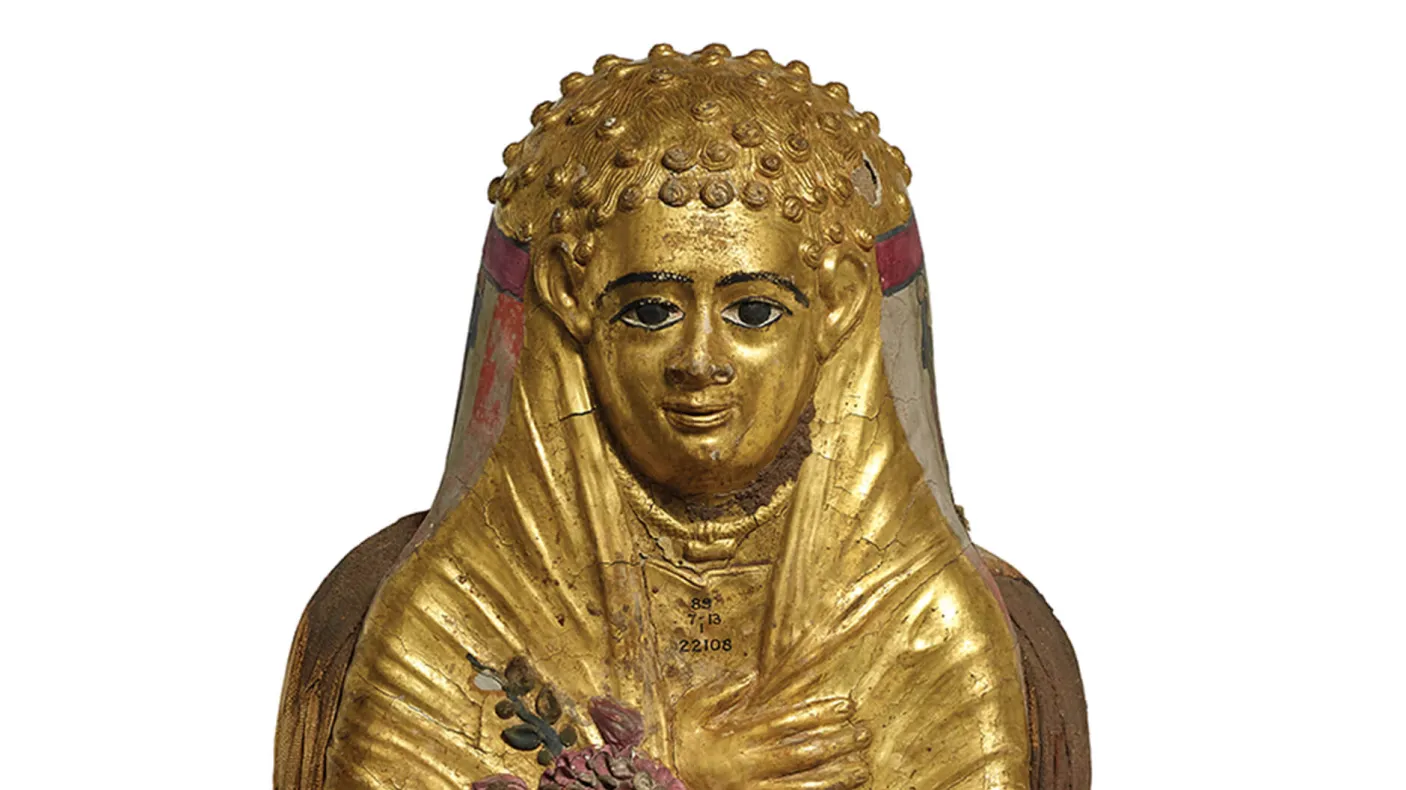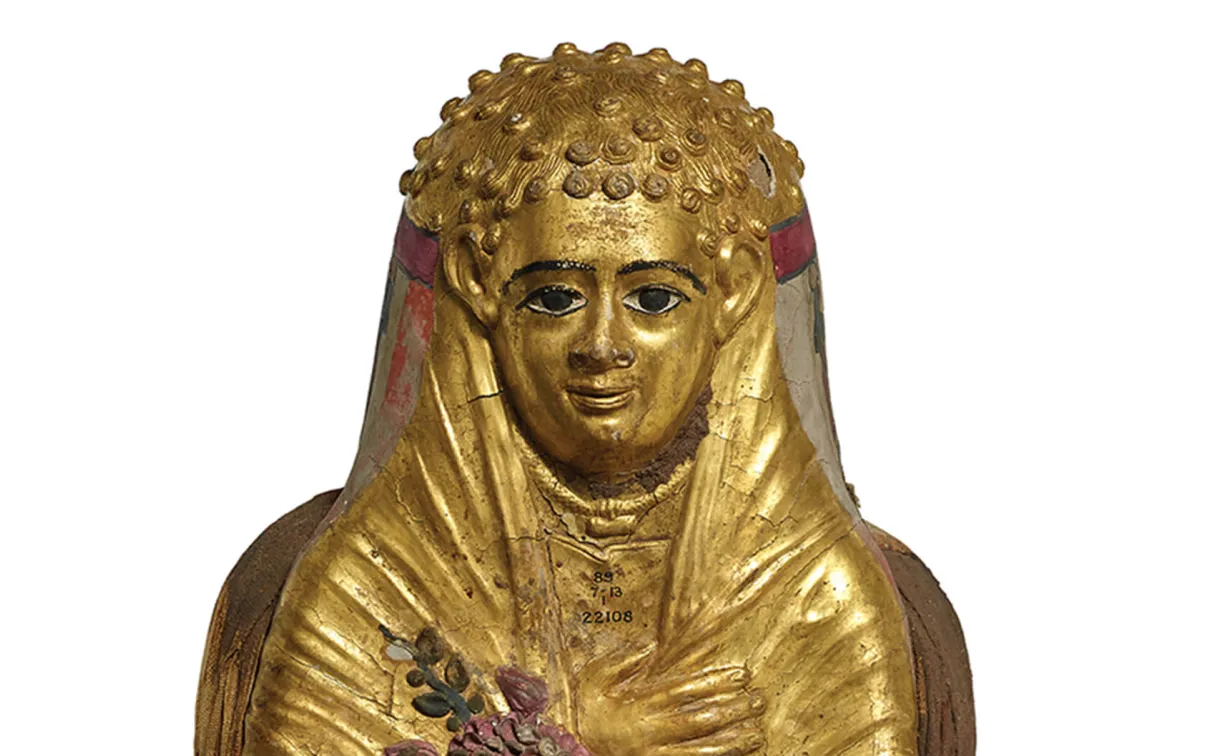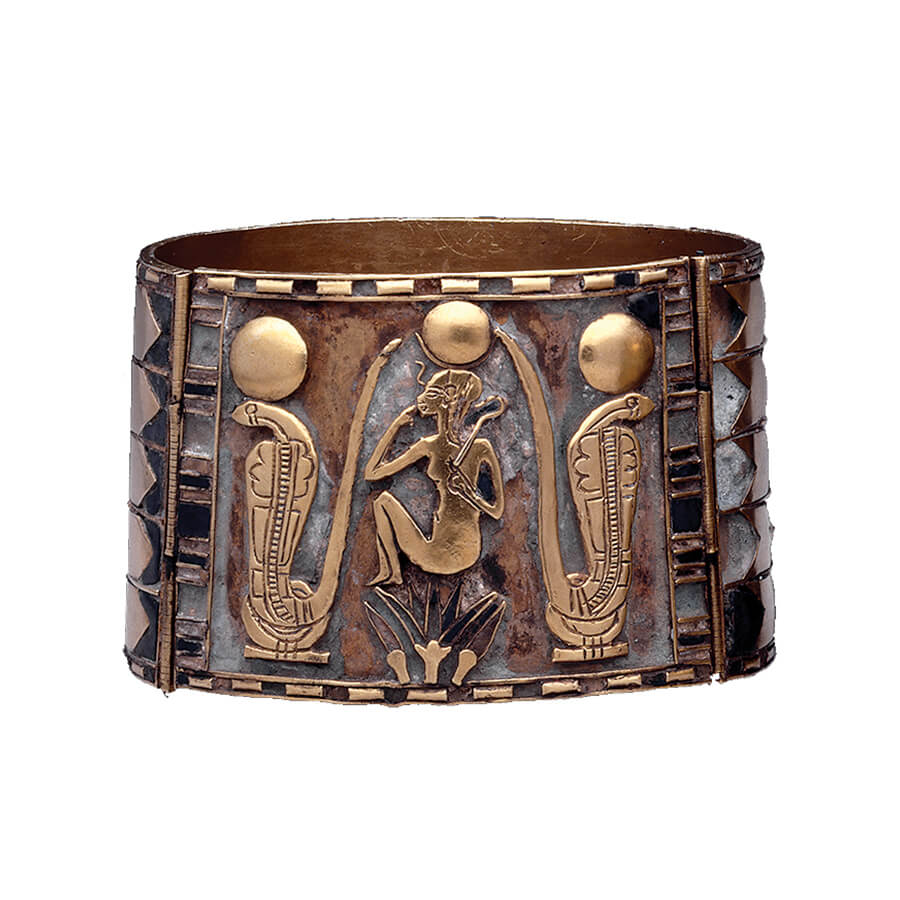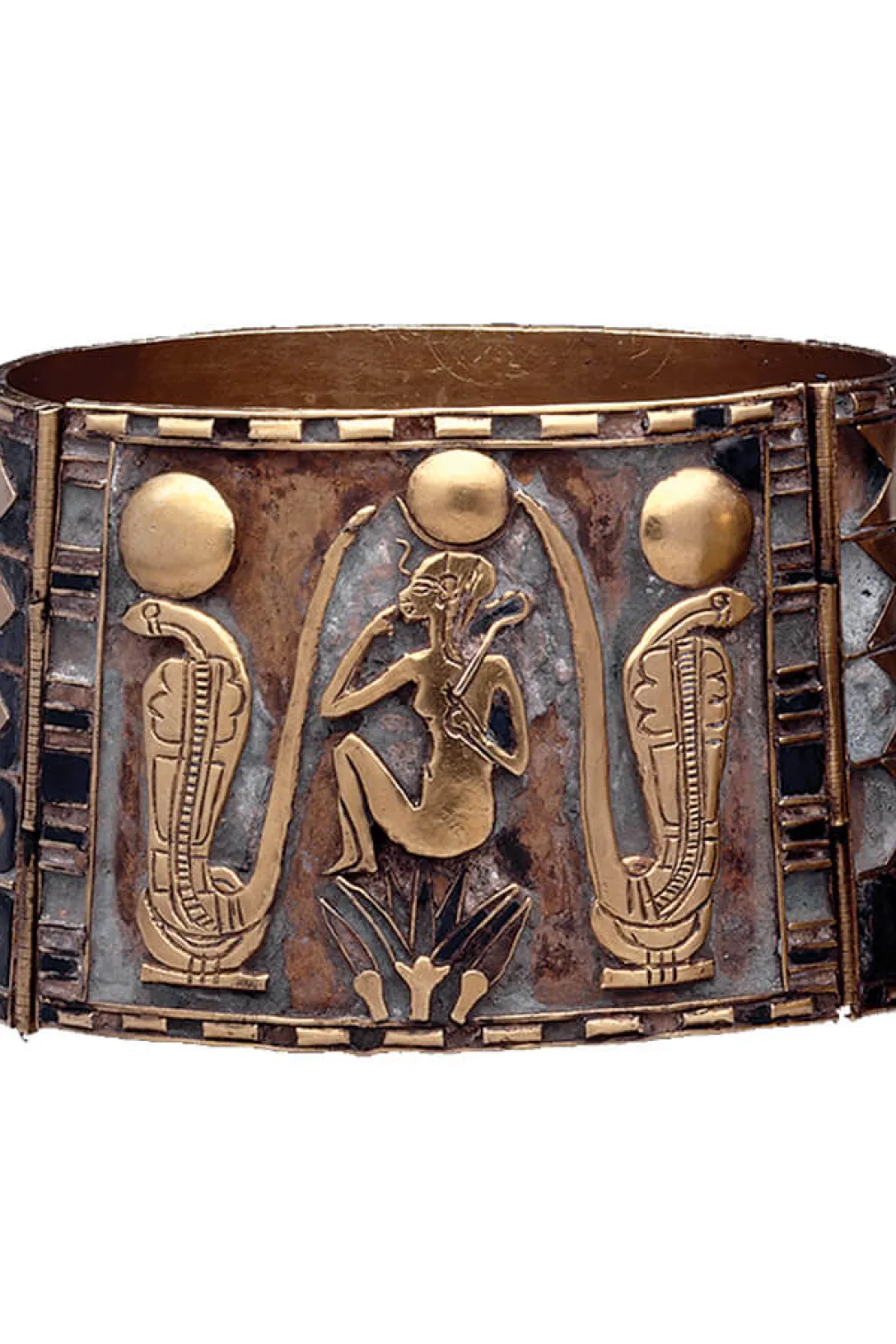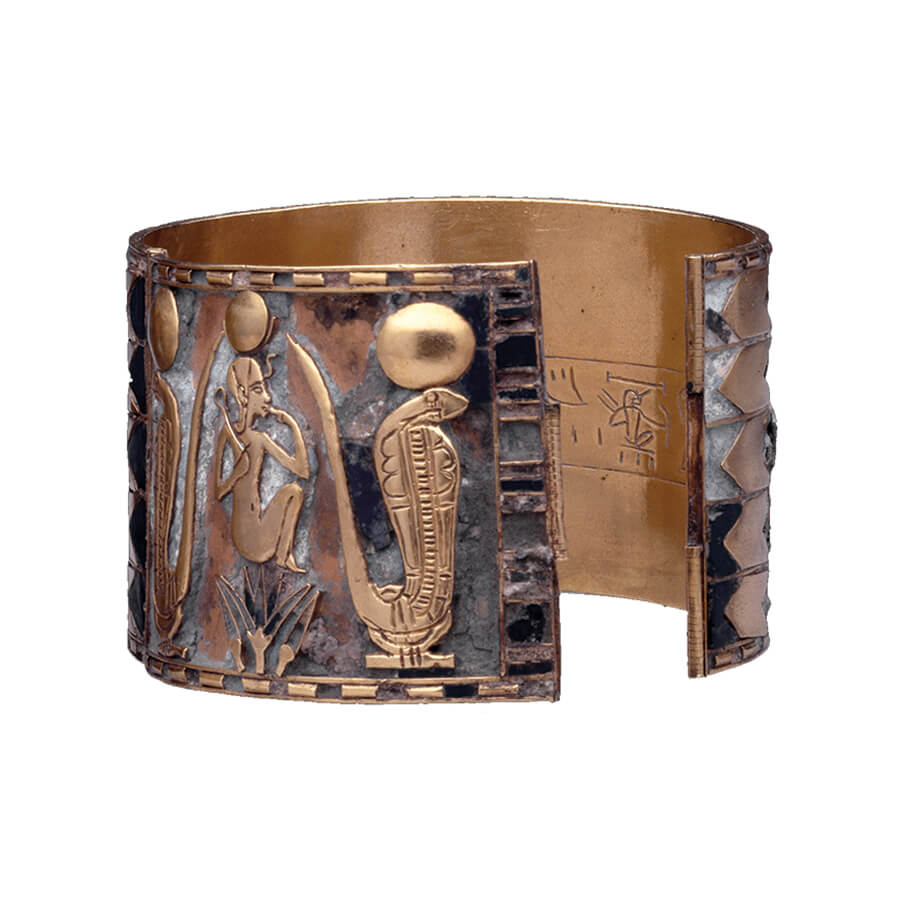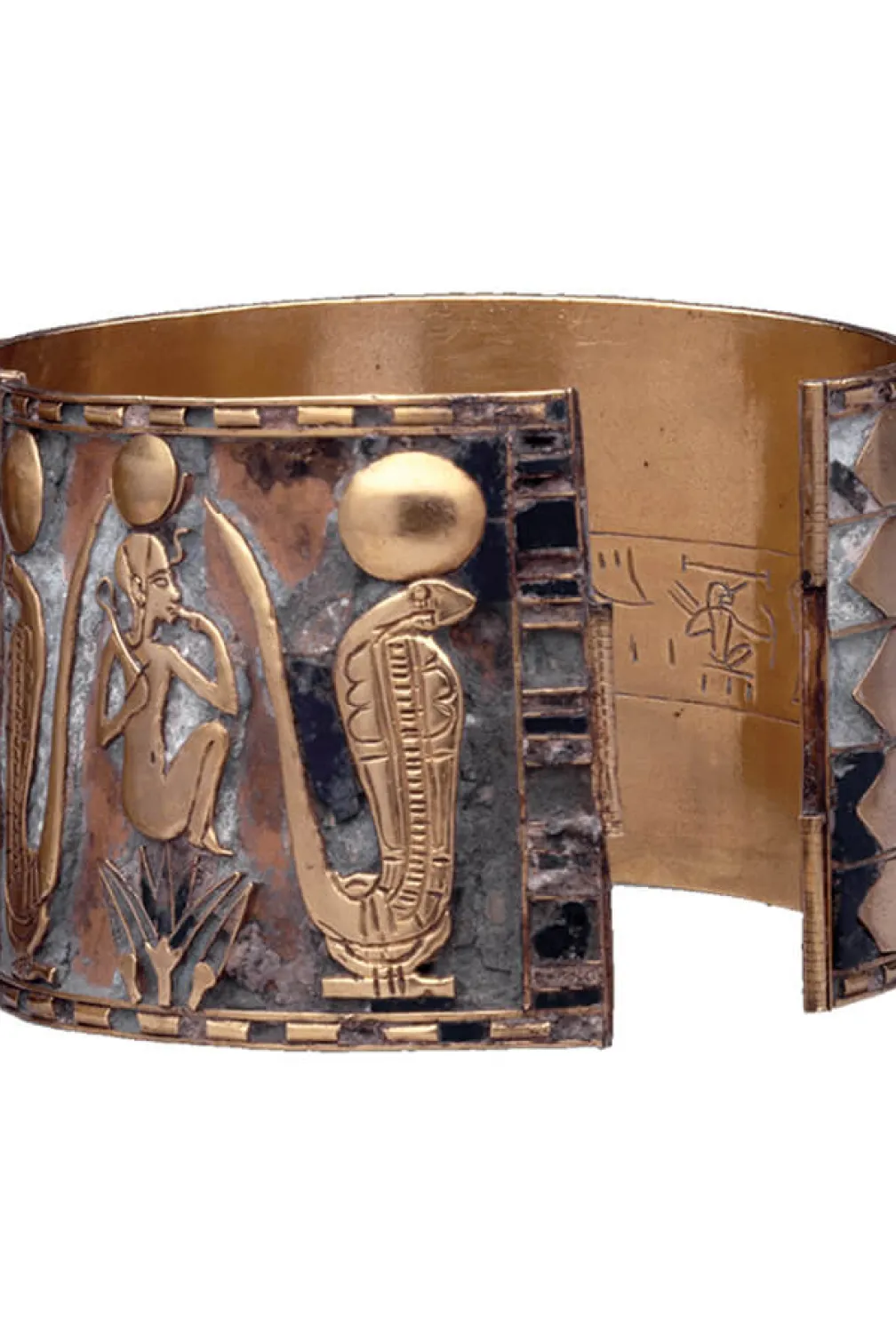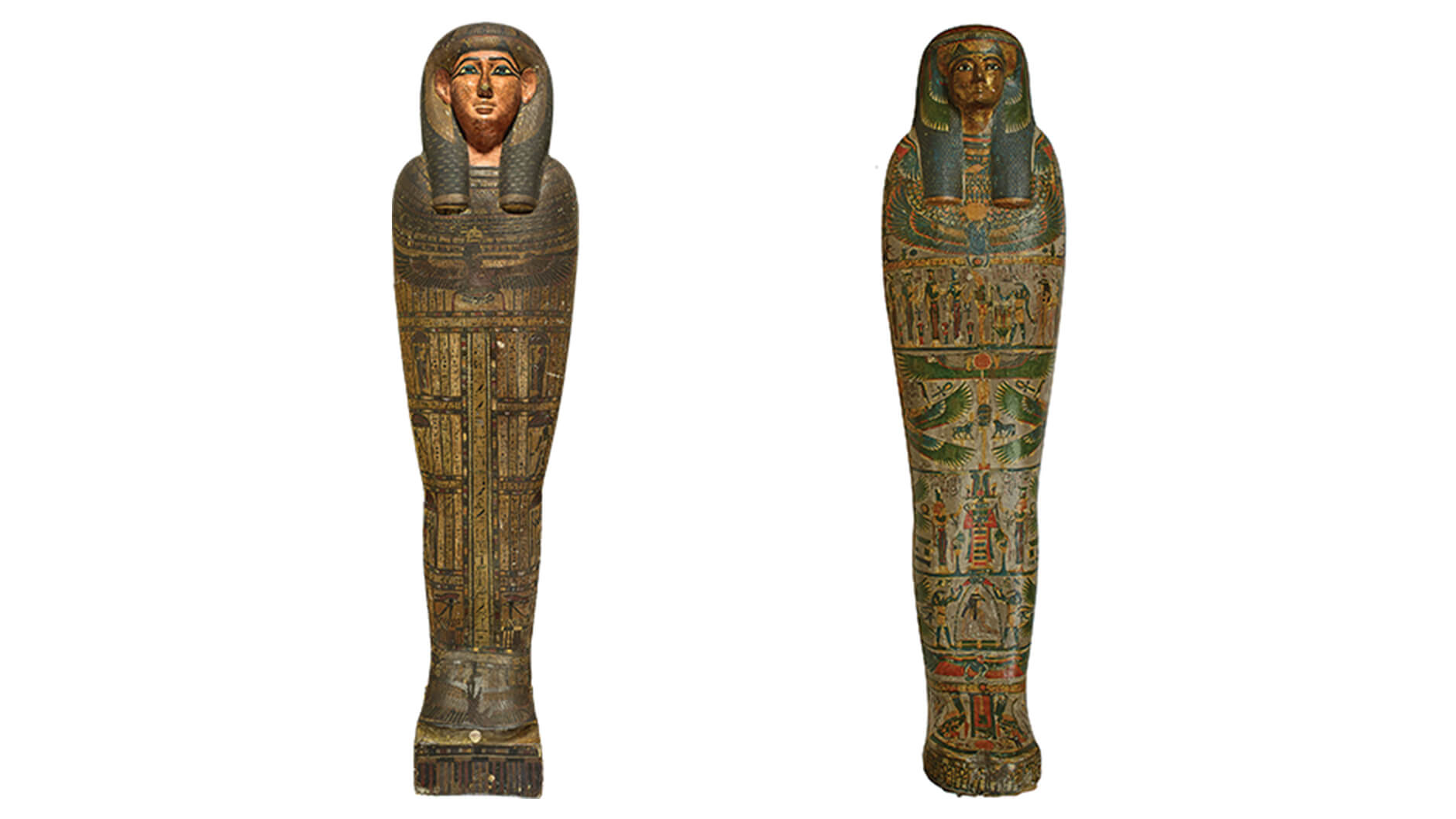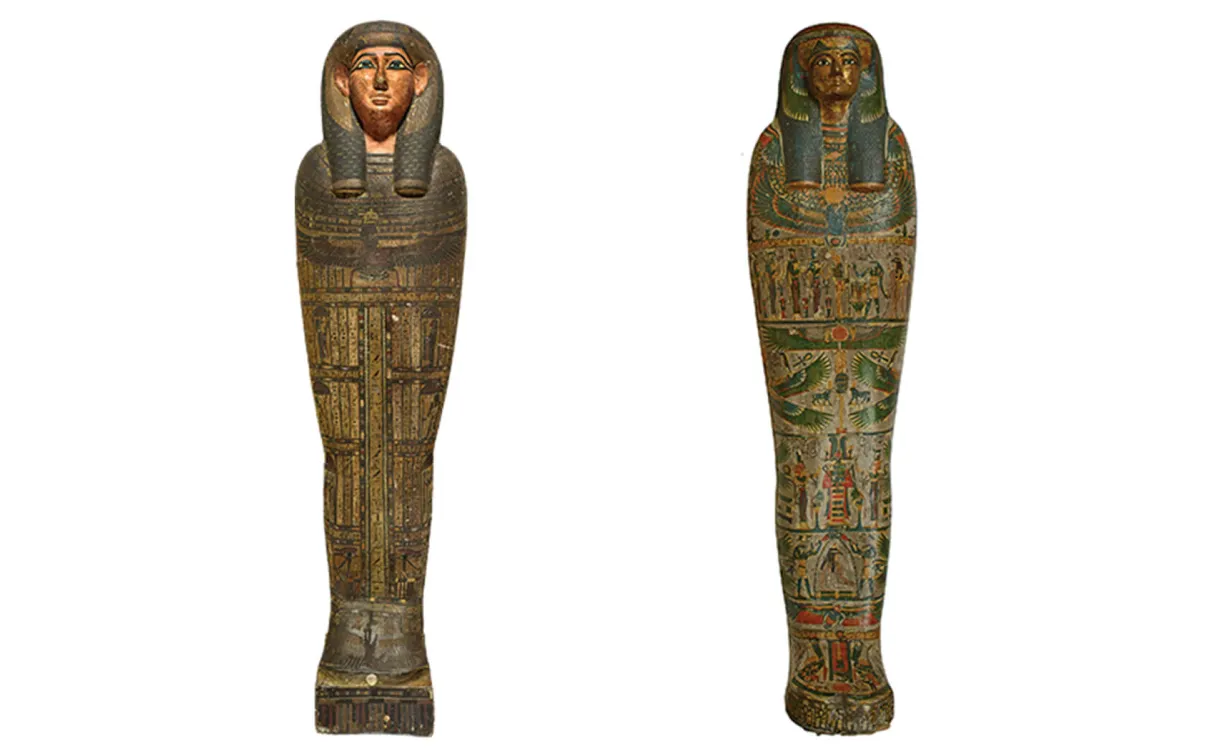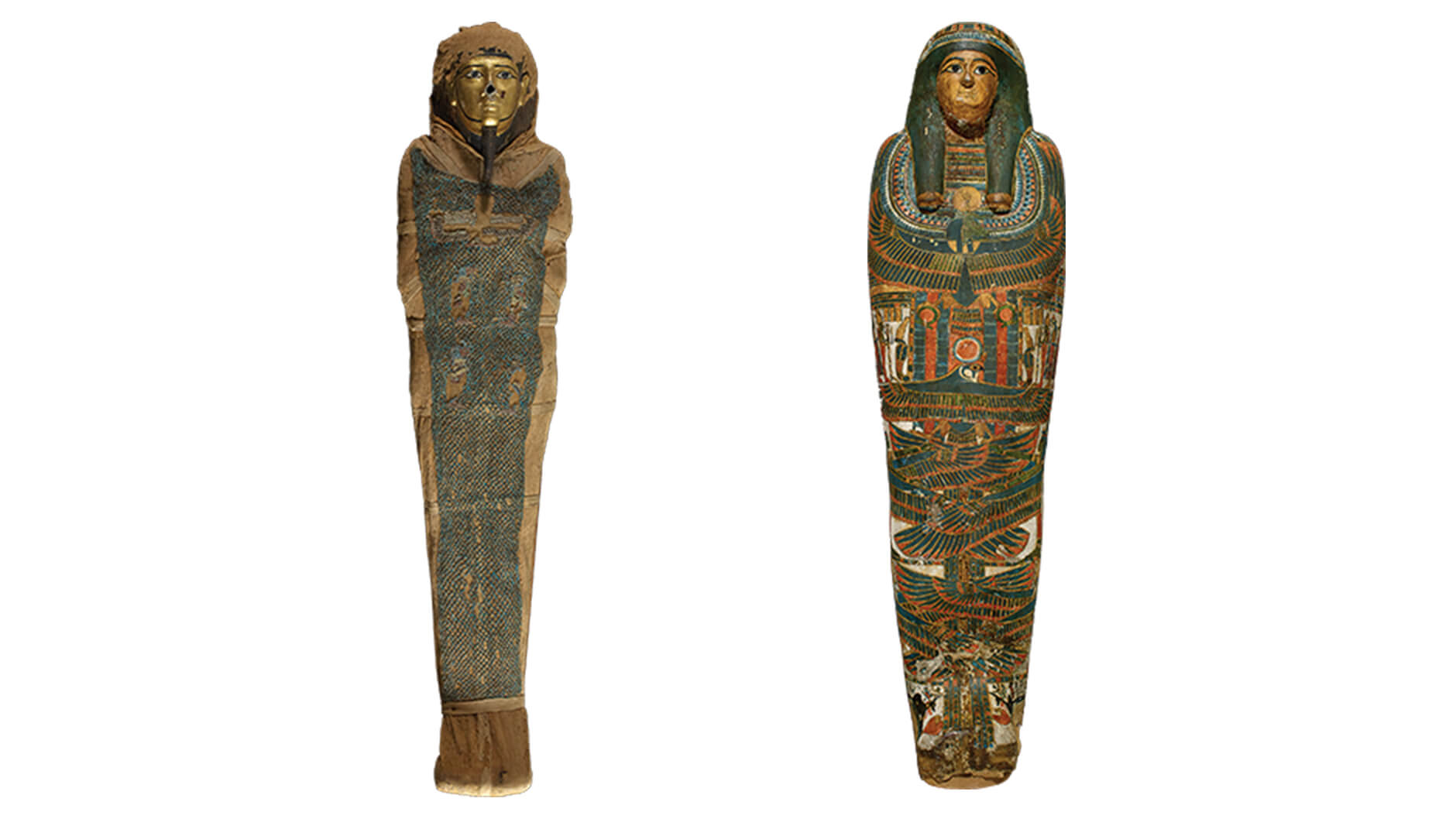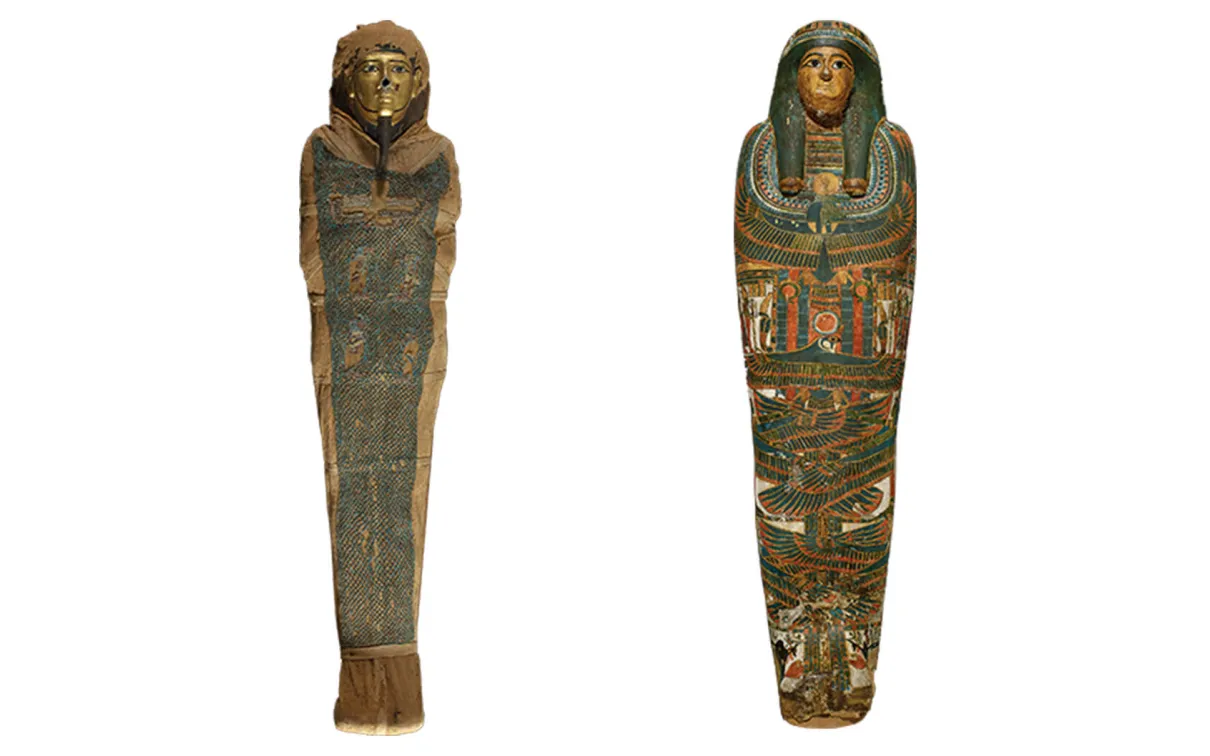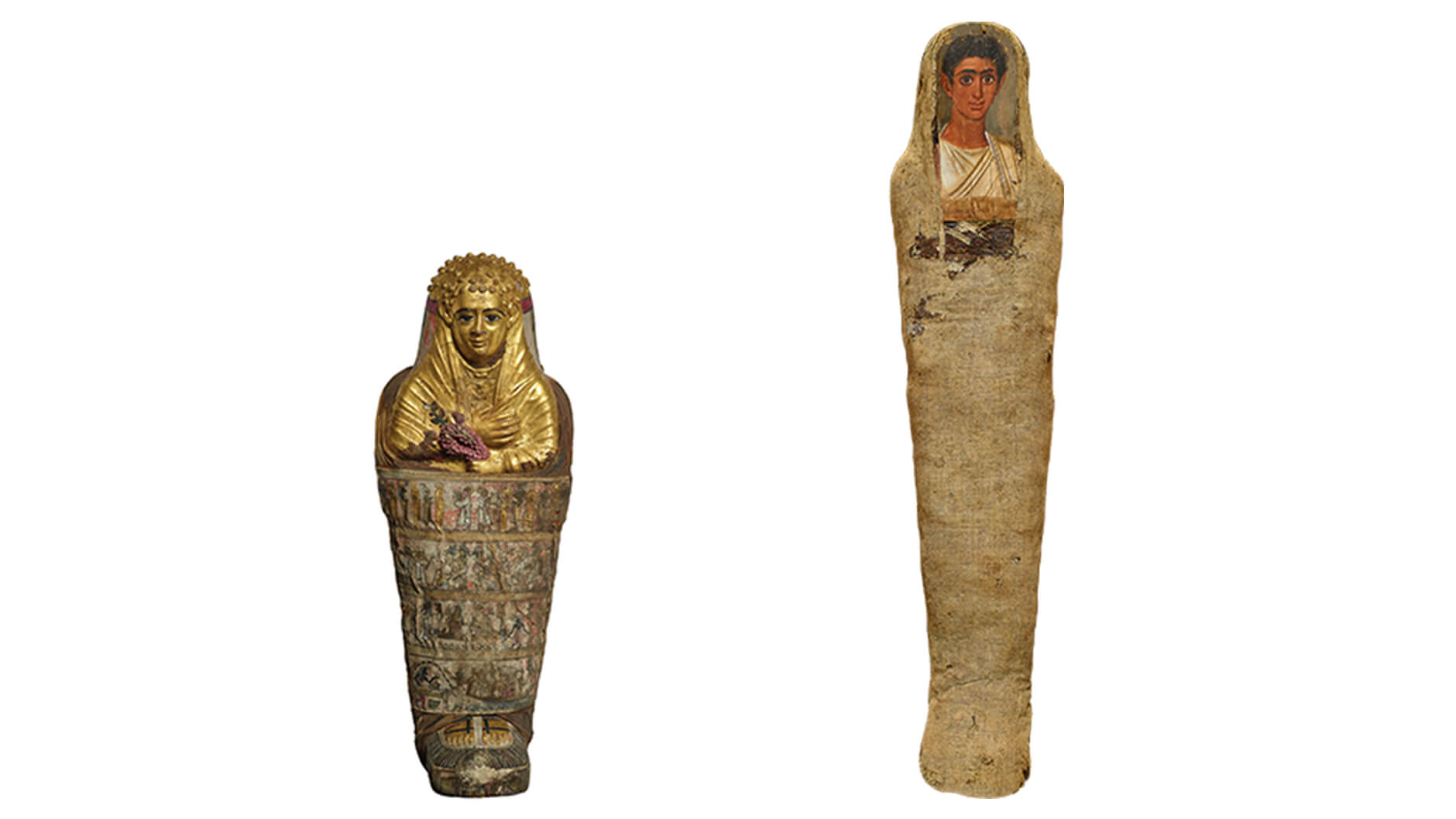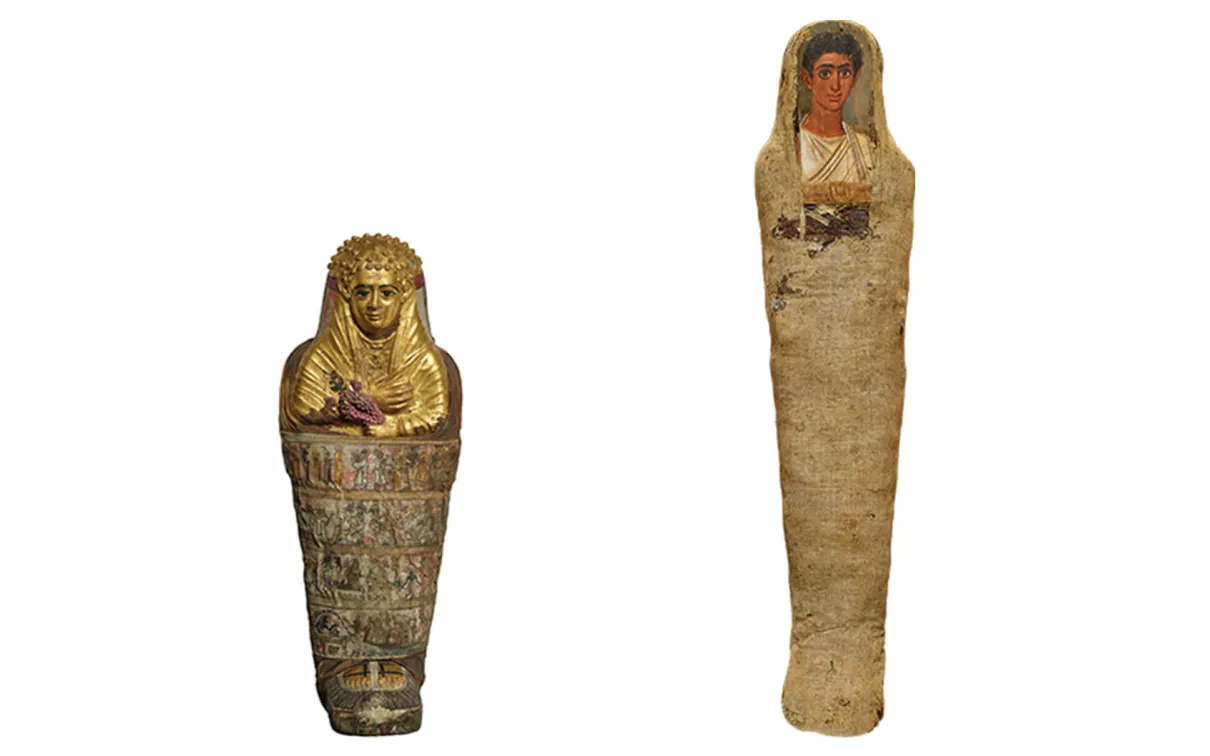Exploring Ancient Lives
The newest exhibition at the ROM provides unique insights into the lives, mummification, and deaths of ancient Egyptians.
Published
Category
Author
After touring the world
After touring the world, the exhibition Egyptian Mummies: Ancient Lives. New Discoveries is making its final stop at the ROM, before the mummies and objects return to London. An exhibition such as this one requires many years of planning. The project began in 2015 when research was conducted on the six mummified individuals that became the exhibition’s protagonists. The mummies were scanned using the latest technology available, in this case a Dual Energy CT scanner that provides high resolution images without the need to unwrap their fragile remains. Each individual was virtually explored, revealing for the first time since their mummification what lies underneath the wrappings, and providing unique insights into their lives, mummification, and death.
These more sophisticated imaging techniques are allowing us to learn about past embalming practices and funerary beliefs. We are discovering more details about the state of health and age-at-death of the individuals, and are offered a unique window into life in ancient Egypt. With scientific advances, previously unattainable levels of understanding were unlocked using a team of experts, including bioarchaeologists, Egyptologists, conservators, and scientists. This exhibition shares these discoveries with the wider public, revealing the lives of the six mummified men, women, and children.
Gallery 1
Research on the mummies
Research on the mummies in the British Museum’s collections is ongoing. As science and technology evolve, their virtual analysis will continue to reveal new information that can seldom be gained via other sources of evidence from the period. It is only through the study of the individuals’ carefully preserved remains that we are able to further our understanding of the people who lived thousands of years ago, providing rare insights into their state of health, their beliefs, and the elaborate methods used to prepare the body for the afterlife.
Nestawedjat was a married woman
Nestawedjat was a married woman and lived at Thebes around 600 BCE. Before starting this research, we knew very little about her life other than her name and title inscribed on her three wooden coffins. The CT scan data revealed a wealth of new information, from the way she is embalmed to the presence of intriguing amulets among the wrappings.
The embalmers used well-established methods to prepare her body, removing her organs and embalming them separately, extracting her skull brain via the nose, and pouring vast quantities of resin over her body to aid preservation. A couple of amulets, in metal and stone or faience, were placed around her neck. Their shape and meaning remain a mystery, although they were certainly meant to protect her in the afterlife.
As a Chantress of Amun, Tamut performed rituals in the temple of Karnak, one of the largest religious complexes of the ancient world. She belonged to a family of priests of high status and her father worked in the same temple. Her cartonnage case, with its intricate decoration, and the presence of many amulets and other trappings placed on and in her body, reveals the care with which she was prepared for the afterlife.
The CT scan showed the particularly good preservation of her skin, as well as her hair, which was cut short at the time of her death. The scan also revealed that she was suffering from atheroscerosis (plaque in her arteries), a sign of cardiovascular disease, and she was at risk of a stroke or a heart attack, although it is not possible to tell whether this was the cause of her death. Her age at death (between 35 and 49 years) and appearance are in sharp contrast with the image seen on the cartonnage case. There, Tamut is depicted as a young woman wearing a long wig and an elegant semi-translucent dress.
Irthorru was also a pries
Irthorru was also a priest, but lived in Akhmim, around 200 kilometres from Thebes. He participated in the worship of several gods and probably shared his priestly duty across several temples. Irthorru’s body was carefully embalmed, his arms crossed over his chest, with several amulets carefully placed on and in his body. A healing wedjat eye amulet was placed on his left hand to grant him protection after death.
Surprisingly, few layers of linen were used to wrap his body and his outer shroud hides the fact that his mask only covers his face and does not fully surround his head. The rest was modelled to create the appearance and expected shape of a full mask. This unique example confirms the embalmers’ and craftsmen’s creativity in the development of new techniques.
Unfortunately, without a name or title, many mummified individuals remain unidentified. As is often the case, the vibrant cartonnage case encasing the remains of the temple singer was inscribed with her name but, sadly, this area is now damaged and her name is illegible. Her physical remains, however, reveal the great care with which she was prepared for the afterlife. Her mouth and neck were delicately packed so that her features would remain the same once mummified. Small pellets of gold were scattered on her skin. As ancient Egyptian gods were believed to have skin made of gold, this addition was perhaps used to bestow upon her divine qualities.
Surprisingly, in spite of the careful preparation of her body, a handful of small amulets seems to have been thrown disorderly inside her abdomen via the incision used by the embalmers to remove her internal organs. Believed to offer protection in the afterlife, they may have been forgotten and inserted at the last minute.
Very few children
Very few children were embalmed during the Pharaonic period. The trend changes with the arrival of the Romans, when mummification appears to become accessible to a broader spectrum of society. Unlike the other mummified individuals presented here, we know— broadly—where the mummy of the young child was found. His grave was excavated in the cemetery of Hawara, in the Fayum, and also contained the mummified remains of another four individuals. We do not know whether they were related, although their common features suggest that mummies and funerary trappings may have been prepared in the same workshops.
The child in the exhibition was delicately wrapped in vast amounts of linen. The mask covering his head was largely gilded, and a scene on the back of it shows the deceased—as a child—being purified by the gods Thoth and Horus. Even in Roman times, ancient beliefs persisted! The analysis of mummies from Roman Egypt also shows that some traditions persevered, while other evolved. The external appearance starts being of paramount importance, with mummies from this period wrapped in artfully arranged bandages and surrounded by elaborate masks, portraits, and shrouds representing a more naturalistic depiction of the deceased’s face.
The very well-preserved mummified remains of the young man show that mummification techniques were more varied. In the case of this young man, no attempt was made to remove the internal organs. In spite of that, their preservation is remarkable. The bones were in the process of completing their growth and he was 17 to 20 years old when he died. His portrait, although reflecting his young age, does not reveal that he was overweight when alive, something that is clearly visible on the CT scan and may have been a factor in his premature death.
Marie Vandenbeusch
Marie Vandenbeusch is a Curator in the Department of Ancient Egypt and Sudan at the British Museum. She has worked on temporary and permanent displays for both UK and Swiss institutions and was one of the curators of the successful exhibition Ancient Lives, New Discoveries at the British Museum. She is also part of the team working on the Amara West excavations in Sudan. Her research interests are the study of religion and magic in ancient Egypt, in particular through funerary texts and iconography, and the history of Egyptology.
Daniel Antoine is the British Museum’s Curator of Physical Anthropology, with responsibility for the Museum’s human remains. His areas of expertise include the scientific study of mummies and human skeletal remains, human anatomy, ancient diseases and hard tissue biology. Before joining the Museum in 2009, Daniel was a Leverhulme Trust (2006-2009) and Wellcome Trust Postdoctoral Research Fellow (2002-2005) at the Institute of Archaeology, University College London, where he gained his PhD in 2001. His research has focused on developing new methods to investigate past human life using mummified, dental and skeletal tissues as indicators of age, disease, growth and development.
